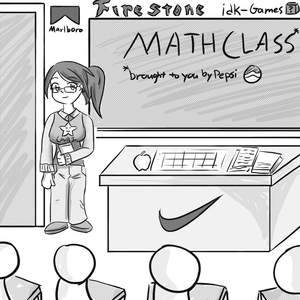Classes brought to you by budget crisis
A 21st century philosopher once mused: Fall is here, hear the yell/ back to school, ring the bell/ brand new shoes, walking blues/climb the fence, book and pens/ I can tell that we are gonna be friends.
Yes, as another Labor Day has come and gone, it is once again time for most little Trojans-in-training to head back to their schools, in the midst of the state’s dire financial flux. School districts across the cash-strapped state of California are opting to find alternative ways to try to compensate the bits of their budget that were terminated by Gov. Arnold Schwarzenegger.

Thomas Curry | Daily Trojan
With approximately $17.7 billion cut from the education budget over the past two fiscal years, the schools we’re counting on to educate the business leaders and wunderkind economists of the future are laying off teachers left and right. The result is rising class sizes and fewer extracurricular activities — an interesting strategy to say the least.
Needless to say, the conditions present in the pauper-esque educational system are not very conducive to optimal education at all, let alone future prosperity.
So in the current economic climate, the onus of trying to right this ship falls squarely on the sun-baked shoulders of the school districts.
Taking a page straight out of the seedy book of professional sports, many are exploring the option of marketing and branding their schools.
Some schools in San Diego, for instance, are in talks to give away naming rights to dorms and dining halls in exchange for additional revenue. In the same vein, Beverly Hills High School is looking to launch a clothing line bearing the school’s crest.
Assignment one: Define selling out.
Perhaps it’s a little unfair to label the above actions as such. Fundraising on steroids seems more apt. But there is still something very un-kosher about this merging between the corporate world and the impressionable young minds of the state.
Imagine spending your first kindergarten lunch chowing down on your crustless peanut butter and jelly in the Procter & Gamble cafeteria.
Somewhere, Jack White is foaming at the mouth.
But supposing such measures are implemented (which seems likely), maybe it won’t be the worst thing that could happen. In fact, perhaps the future leaders of the world will be much better served by the harsh experiences gained on this accelerated course plan in the proverbial school of hard knocks.
Assignment two: Define capitalism.
Forget sharing. Greed is good.
Throwing out the age old values that have been instilled in grade school classrooms for the past couple of generations, students will learn that if you’ve got it, you should flaunt it.
With multiple school districts fighting for money across California, there’s potential for ruthless battles between school districts fighting for the same sponsors, especially when it means the difference between keeping quality teachers and sinking even further into mediocrity.
Assignment three: Define desperation.
HELP!
Whereas many schools across the nation utilize partnerships with large corporations, professional sports franchises and the like, it seems schools hardest hit by the budget cuts will be reaching out to such resources not to supplement, but rather to replace their extracurricular programs.
While there is no downside to such a partnership, there is something wrong with children being deprived of such opportunities in the event that an arrangement can not be worked out.
Further, many school systems are asking for donations from the families themselves, effectively bringing public schools into private school territory, but without the same benefits.
And though officials assure the public that any and all efforts to try to market individual schools will be tasteful, the skeptics would argue that the districts are “pimping” their schools for money. When it comes down to fighting for those extra dollars, who’s to say that there won’t be a compromise in integrity somewhere down the road?
Assignment four: Define survival of the (financially) fittest.
Already it’s apparent that school districts in more affluent areas of the state will be much better off than their low-income counterparts, with large private donations helping to offset the budget shortfall.
With nothing to help promote parity across the state’s school districts, there will only be a greater gap to fill between the upper and lower classes — perpetuating some of the same problems in the busted economic status quo.
Under this system, it appears the quality of education will be solely based on how well individual schools can market themselves.
Fair. Just like most of the dodgeball games that take place on the hallowed playgrounds across the nation.
Sadly, there’s no use in pointing fingers in this unfortunate situation. The state budget crisis saw casualties across every important component of the public sector. With the future appearing dreary for the foreseeable future, there is no alternative to the current situation, no convenient circuit breaker to restart the overloaded economy. And surely, the peanut gallery might be overreacting to what seems to be a lucrative and logical choice for struggling schools that would not get their funding elsewhere.
But the biggest problem is that the worry-free lifestyle associated with the formative years of education will be lost in this intermingling of business and schooling. It will be hard for students not to constantly worry whether or not the school district will be able to sell enough hats to furnish a school play or if the homecoming football game can take place on the school’s home field-cum-IMAX-theater.
The first week of school: sponsored by uncertainty.
Here’s to hoping that this crop of fundraising ideas serves its purpose without overstepping its boundaries.
Kids. They grow up so fast.
Soojin Yoon is a junior majoring in public relations. His column, “Boy Meets Word,” runs Thursdays.
